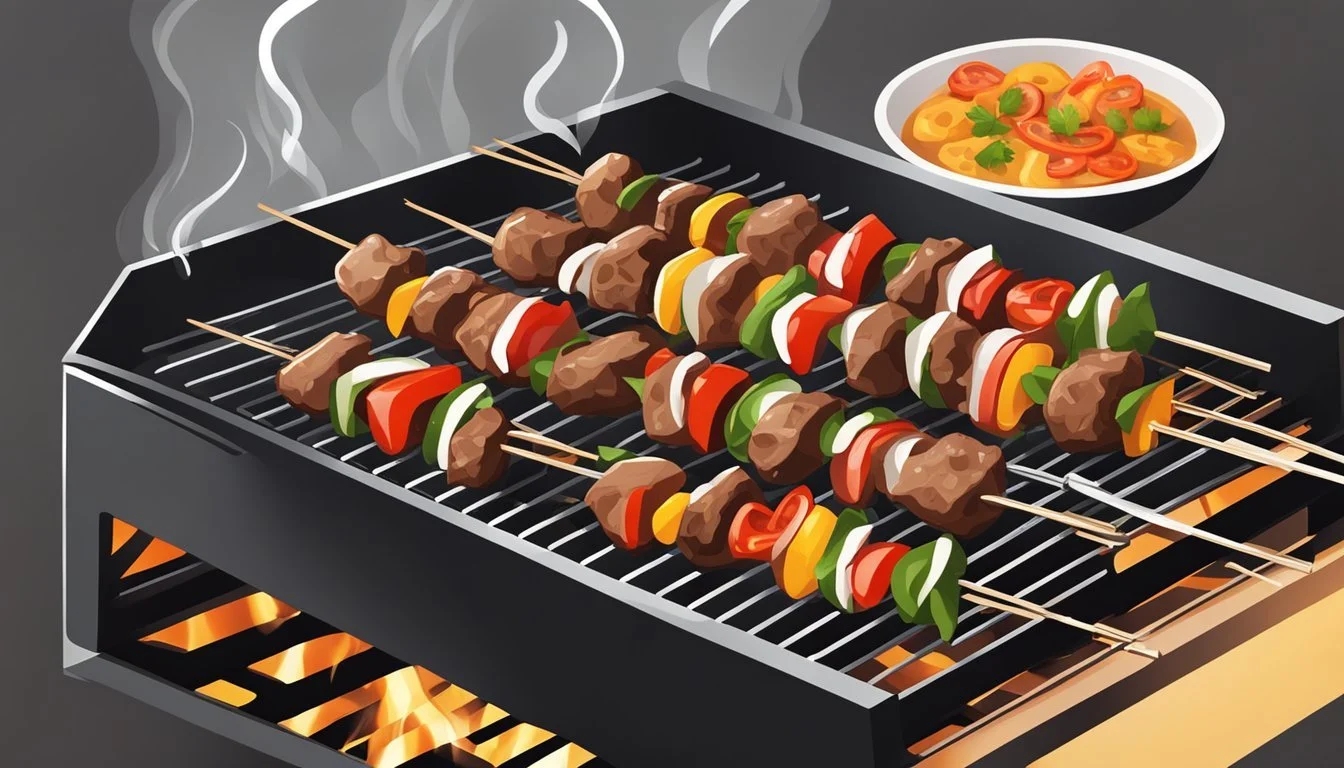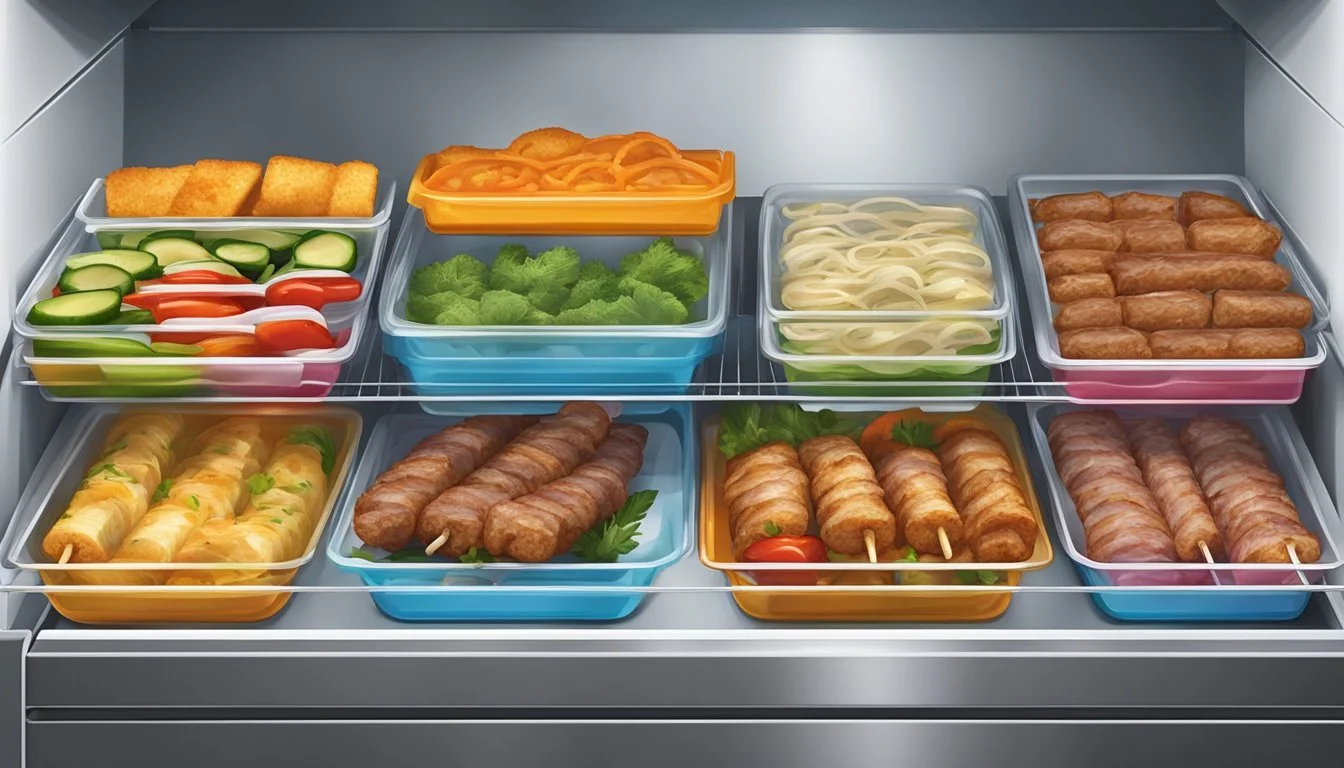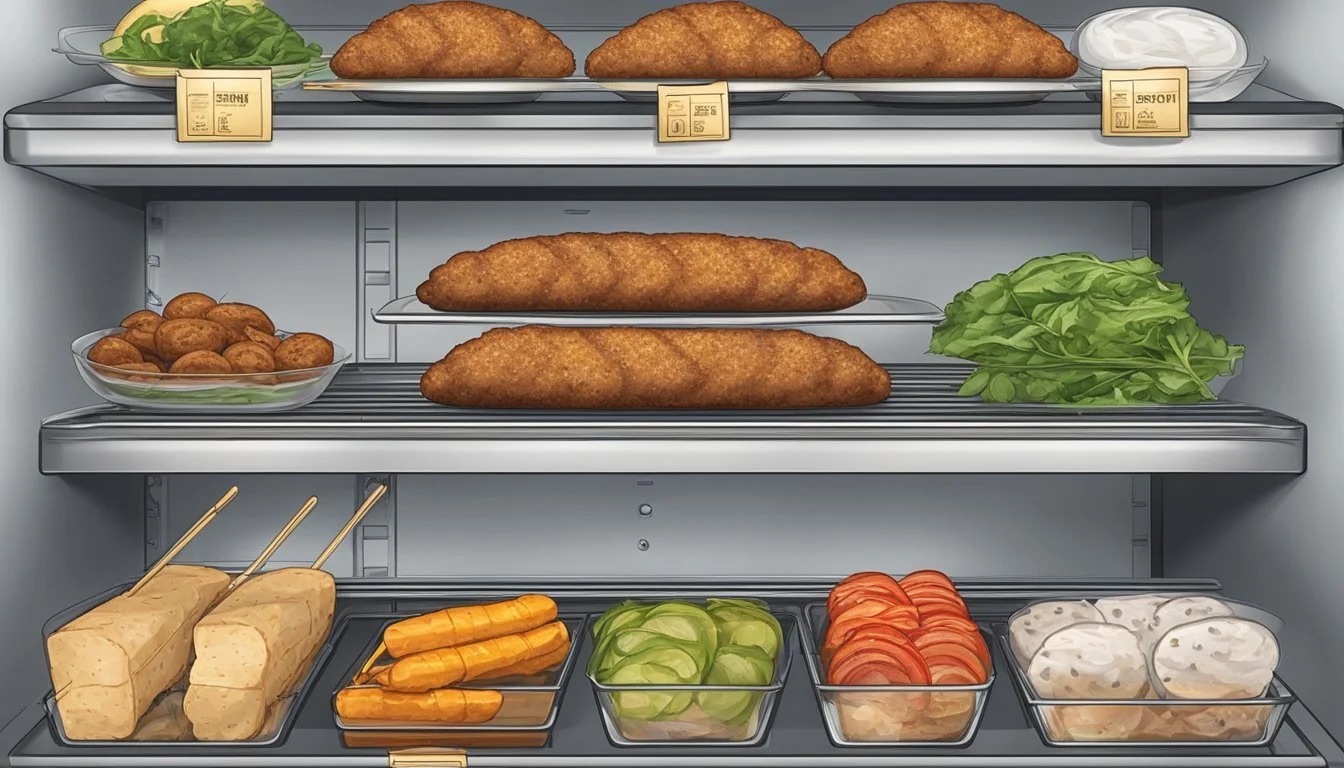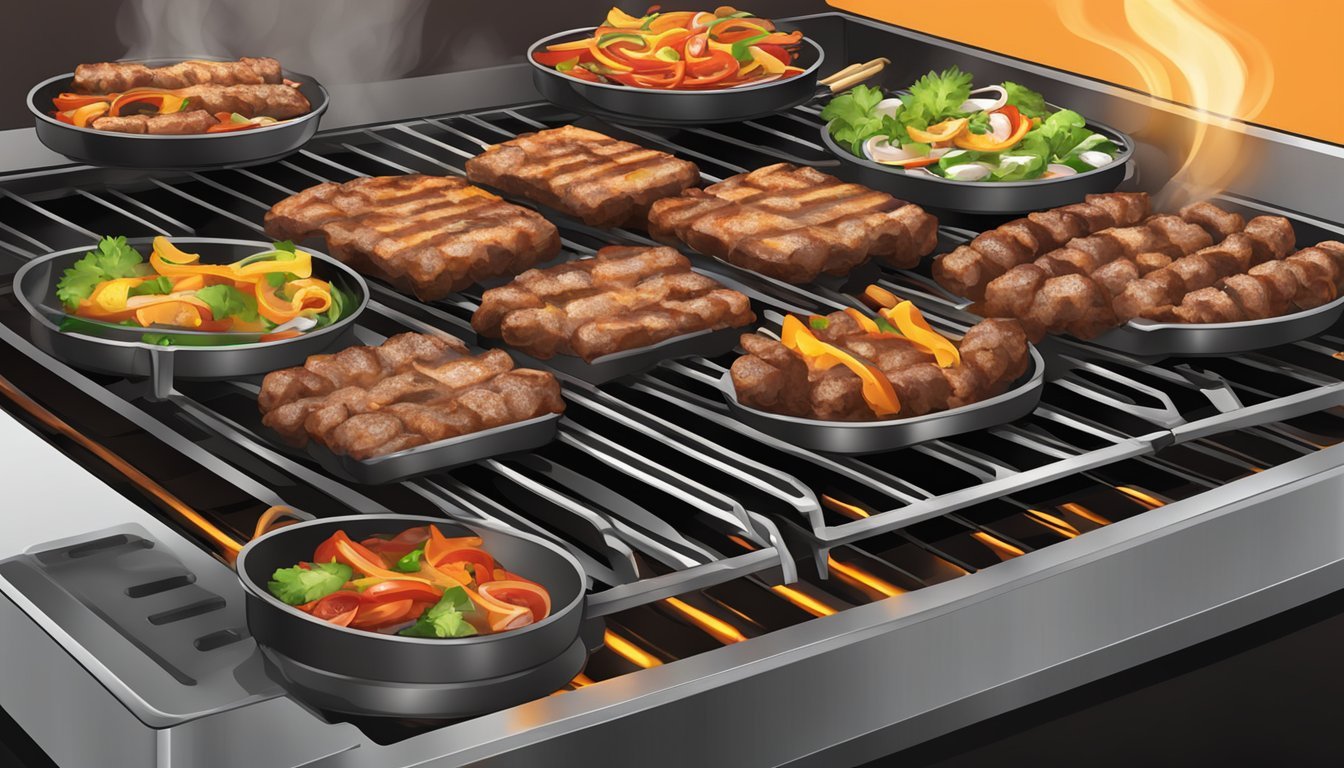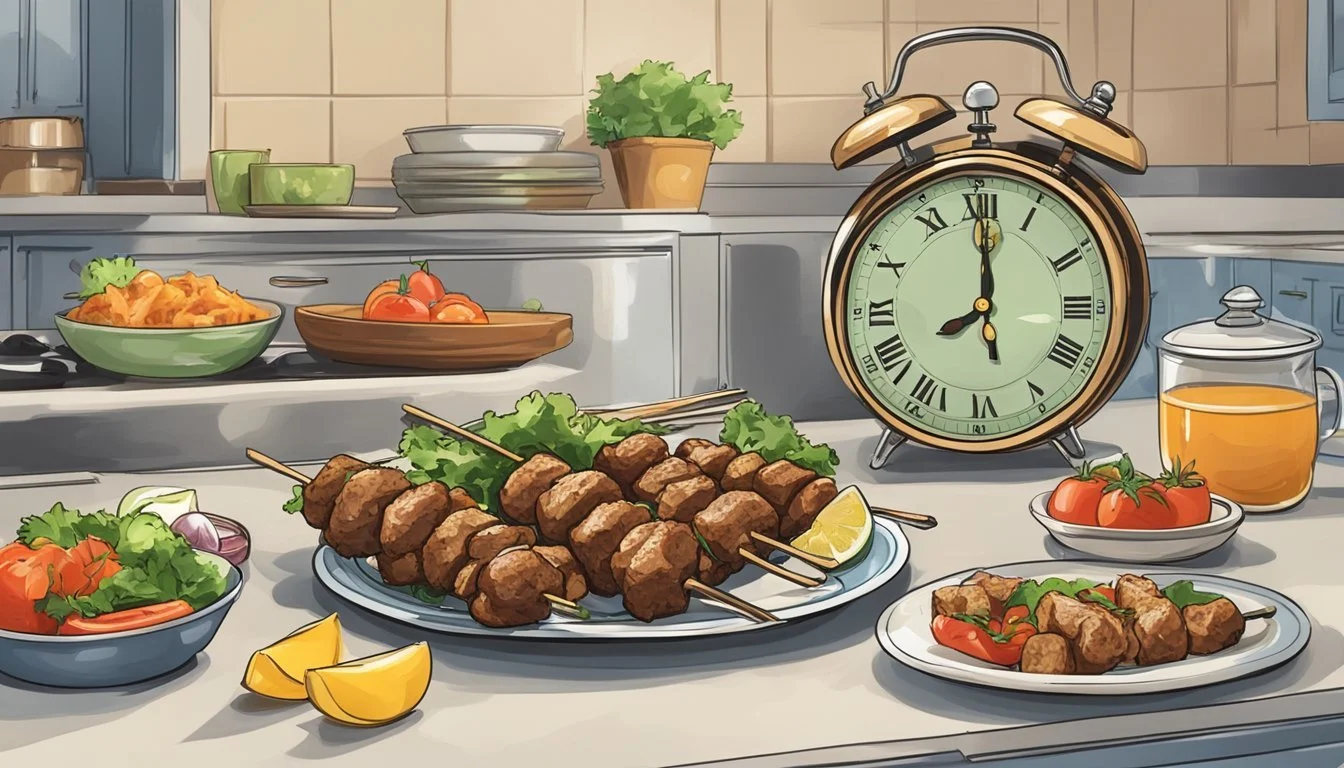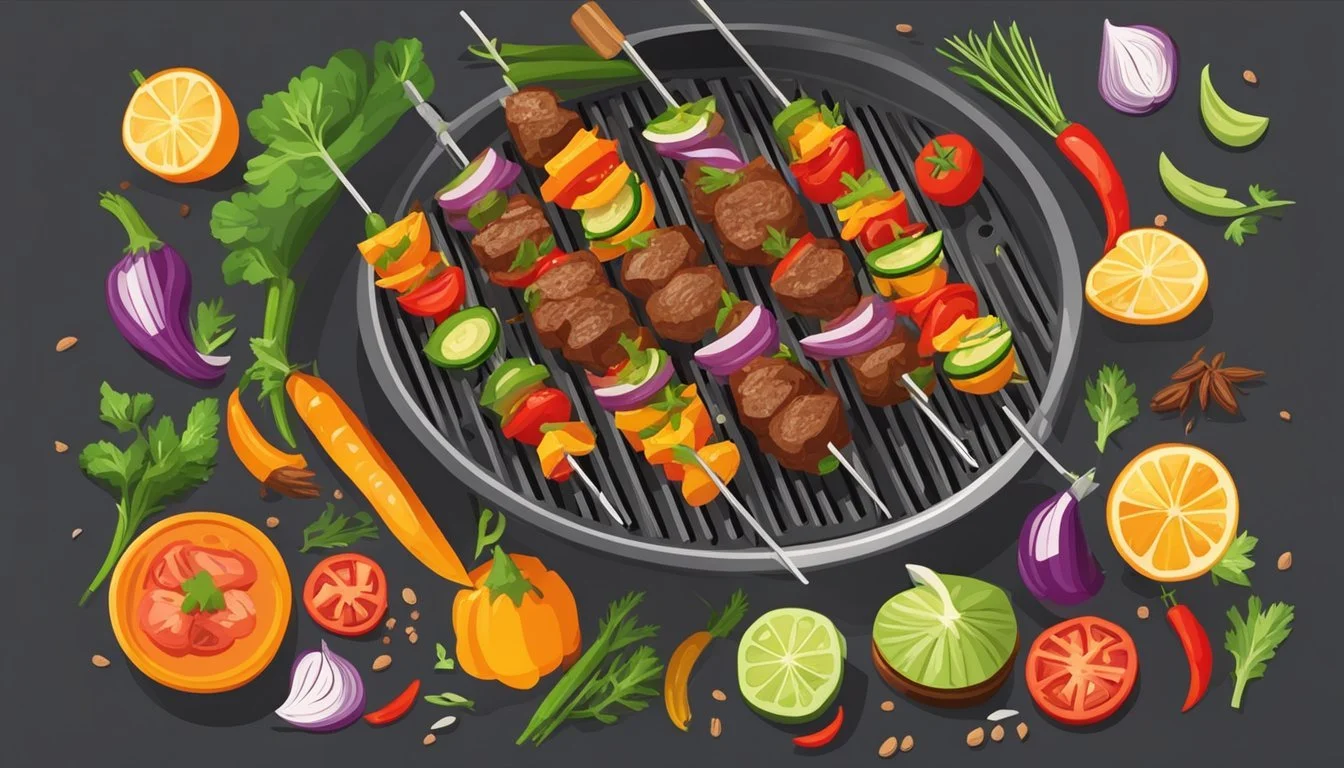How Long Do Freshly Prepared Kebabs Last?
Shelf Life and Storage Tips
The shelf life of freshly prepared kebabs depends on various factors, including the type of meat used and the storage methods applied. Kebabs made from fresh meat generally have a shorter shelf life compared to those made with cured meats. It is crucial to adhere to food safety guidelines to ensure the quality and safety of the kebabs. Refrigeration plays an integral role in preserving the freshness of kebabs, and the proper storage temperature should be maintained at 40°F (4°C) or below.
When stored appropriately in the refrigerator, raw kebabs should be cooked within one to two days, as suggested by food safety experts. On the other hand, cooked kebabs can be kept in the refrigerator for consumption within 3-4 days. It is important that kebabs, whether raw or cooked, are placed in an airtight container to prevent contamination and the absorption of other odors present in the refrigerator. The handling prior to storage, including minimizing cross-contamination risks and ensuring thorough cooking, also affects the longevity of kebabs.
Food Safety and Hygiene
In the context of freshly prepared kebabs, maintaining food safety and hygiene is crucial for preventing foodborne illnesses. Specific attention should be paid to understanding how bacteria proliferates in food and the measures needed to prevent cross-contamination.
Understanding Bacteria and Foodborne Illness
Foodborne bacteria such as Salmonella, Listeria, and E. coli are commonly associated with raw or undercooked meat and can cause severe health issues. Symptoms of an infection can include nausea, vomiting, stomach cramps, diarrhea, fever, fatigue, headache, and dehydration. Bacteria thrive in the "danger zone" between 40°F (4°C) and 140°F (60°C), where they can double in number in as little as 20 minutes. Storing freshly prepared kebabs at a proper temperature both before cooking and after is essential in inhibiting bacterial growth.
Prevention of Cross-Contamination
Cross-contamination can occur when harmful bacteria are unintentionally transferred from one food item to another. This is particularly problematic when handling raw meat for kebabs, as the bacteria from raw meat might come into contact with ready-to-eat foods or cooking surfaces.
To prevent cross-contamination, follow these guidelines:
Use separate cutting boards and utensils for raw meats and other ingredients.
Always wash hands with soap and water before and after handling raw meat.
Clean and sanitize all surfaces and tools after use to remove potential bacteria.
Never place cooked kebabs back on the same plate that held raw meat without cleaning it first.
Adhering strictly to these food safety practices helps ensure that freshly prepared kebabs can be enjoyed without the risk of food poisoning.
Kebab Preparation
When preparing kebabs, the freshness of the ingredients and proper cooking techniques are essential. These factors play a crucial role in how enjoyable and safe the kebabs will be to eat.
Selecting Ingredients for Kebabs
To ensure the best taste and safety, one should select fresh meats such as beef, chicken, or lamb. Meats should be fresh, not previously frozen, and should be stored at a temperature below 40°F (4°C) prior to cooking. They can be chopped or sliced into even, bite-sized pieces that will cook uniformly.
Vegetables add color, flavor, and texture to kebabs. It's important to choose fresh, edible vegetables like peppers and onions, which should be cut to match the size of the meat pieces. Here's a suggested list of fresh vegetables often used in kebabs:
Bell peppers (green, red, yellow, or orange)
Onions (white, red, or yellow)
Zucchini
Cherry tomatoes
Mushrooms
Each vegetable should be inspected for freshness and washed thoroughly before being skewered.
Grilling and Cooking Techniques
Skewers can be made of wood or metal. If using wooden skewers, it is advisable to soak them in room-temperature water for 15-30 minutes to prevent burning. The ingredients are then skewered, with a good balance of meat and vegetables on each stick.
For grilling, one ought to grill the kebabs over medium-high heat. The grill should be preheated, and the grates lightly brushed with olive oil to prevent sticking. Grilled meat, especially chicken kebabs, must reach an internal temperature of 165°F (74°C) to ensure they are safe to eat. As a guide, this typically requires cooking for 10-15 minutes, turning occasionally for even cooking.
For oven cooking, preheat the oven to 350°F (175°C) and cook the kebabs until the meat is cooked through, which generally takes about 15 minutes. It's key for one to utilize a meat thermometer to check for proper doneness.
Proper Storage Solutions
Proper storage of freshly prepared kebabs is pivotal to maintaining their taste, safety, and texture. One can decide between short-term refrigeration for immediate consumption or long-term freezing for extended preservation.
Short-Term Storage
For kebabs intended to be eaten within a few days, refrigeration is essential. They should be placed in an airtight container or wrapped tightly in plastic wrap or aluminum foil, which minimizes exposure to air and prevents the growth of bacteria. The ideal refrigerator temperature should be set at 40°F (4°C) or below. Under these conditions, kebabs can be safely stored for 3 to 4 days.
Refrigerator Storage Guidelines:
Temperature: Maintain at ≤ 40°F (4°C)
Storage time: 3-4 days
Container: Airtight containers or sealed wrap
Long-Term Freezing
When storing kebabs for more than four days, freezing is the recommended method, allowing the kebabs to be stored for up to three months. In the process of freezing, it is crucial to prevent freezer burn, which can occur when meat is exposed to cold, dry air. To avoid this, one should use vacuum-sealed bags or ensure that the kebabs are packed in a storage container with minimal air space. It's important to label the storage container with the date of freezing.
Freezing Guidelines
Freezer temperature: 0°F (-18°C) or lower
Storage time: Up to 3 months
Containers: Vacuum-sealed bags or airtight freezer containers
Labeling: Always date the packs before freezing
Properly stored kebabs not only retain their quality but also reduce the risk of food-borne illnesses by preventing the growth of harmful bacteria caused by improper storage. Whether opting for short-term or long-term storage solutions, maintaining a dry environment, using the right containers, and controlling the temperature are key aspects to remember.
Maximizing Kebab Shelf Life
Maximizing the shelf life of kebabs requires careful attention to temperature control and storage methods. Proper refrigeration and freezing can significantly extend the usability of kabobs and prevent spoilage.
Best Practices for Refrigeration
Refrigeration is critical in prolonging the shelf life of kebabs. To ensure safety and quality, freshly prepared kabobs, particularly chicken kabobs, should be stored in the refrigerator at or below 40°F (4°C) as promptly as possible.
Storage Time: Assembled kabobs with raw meat and vegetables should be cooked within 1 to 2 days.
Packaging: For optimal freshness, wrap kabobs in airtight packaging or sealed containers to prevent cross-contamination.
Placement: Store kabobs on the bottom rack of the refrigerator to avoid any juices dripping onto other foods.
Freezing and Thawing Kebabs
For long-term storage, kabobs can be frozen, effectively pausing their expiration and guarding against spoilage.
Before Freezing: Pat kabobs dry to remove excess moisture and wrap individually in cling film or aluminum foil, then place in freezer bags.
Storage Time: When properly stored, frozen kabobs have a shelf life of up to 3 months for best quality.
Thawing: Thaw frozen kabobs in the refrigerator overnight rather than at room temperature to minimize the risk of bacterial growth. Alternatively, use the microwave's defrost setting for quick thawing before immediate cooking.
Reheating and Serving Leftover Kebabs
When it comes to leftover kebabs, ensuring the meat is heated safely and served in an appetizing way is paramount. The following methods adhere to food safety guidelines and help maintain the texture and flavor of the kebabs.
Safe Reheating Methods
In the Oven:
Preheat the oven to 350°F (175°C).
Place the kebabs on a baking sheet to ensure even heating.
Cover with aluminum foil and heat for 10-15 minutes, checking that they're warmed through.
In the Microwave:
Arrange kebabs on a microwave-safe plate, spaced apart.
Cover with a microwave-safe lid, leaving a vent for steam.
Reheat at medium power (50% power) for 1-2 minutes, then check if additional time is needed.
Creative Ways to Repurpose Kebab Leftovers
As a Salad Addition:
Slice the reheated kebab meat and toss it into a salad for added protein.
Incorporated into a Rice Dish:
Mix diced kebab pieces with cooked rice (how long does cooked rice last?), vegetables like zucchini, and your choice of spices for a quick meal.
Turned into a Pita Bread Sandwich:
Stuff pieces of kebab meat inside pita bread with fresh vegetables and sauces for a satisfying dinner or next-day meal prep.
Understanding Food Expiration
When considering the shelf life of kebabs, one must understand the concept of food expiration. The expiration date is a critical indicator that reflects the last day a food product is expected to maintain its optimal quality and safety. Once surpassed, the food item may not be safe for consumption due to potential spoilage.
Freshly prepared kebabs are subject to a relatively short expiration period. This limitation is due to the perishable nature of the ingredients involved, typically including meats and vegetables. Here's what consumers need to know:
Raw kebabs should be consumed or cooked within 1-2 days of preparation when refrigerated.
Cooked kebabs are safe to eat within 3-4 days if properly stored at or below 40°F (4°C).
The following points illustrate the signs of spoilage:
Visual cues: Discoloration or mold on the meat or vegetables.
Odor: Any off smells are a strong indicator that the kebabs have gone bad.
Texture: A slimy or tacky feel on the meat surface can denote spoilage.
Kebabs, like all perishable foods, should be handled with care, and adherence to storage directions is pivotal in maximizing their lifespan. Consumers are urged to respect the given expiration dates to ensure both safety and quality of their meals.
Signs of Spoiled Kebabs
Recognizing the signs of spoilage in kebabs is crucial to prevent food poisoning. Spoiled kebabs are a result of bacterial growth that can cause unpleasant symptoms if consumed.
Visual and Olfactory Indicators
Spoiled kebabs often present clear visual and olfactory signs indicative of bacterial growth. One should look for:
Change in color: Fresh meat should have a consistent color. The appearance of discolored patches, usually grayish or greenish, is a strong indicator of spoilage.
Presence of mold: Fuzzy or slimy textures on the kebabs, especially around the meat and vegetables, suggest bacterial or fungal growth.
Unpleasant odor: A sour or rancid smell, distinct from the fresh aromatic spices commonly used in kebabs, is a sign that the kebabs should not be consumed.
When to Discard Kebabs
It is essential to discard kebabs if:
They have been stored in the refrigerator for longer than 3-4 days.
There are any symptoms of spoilage as mentioned above.
The kebabs have been left at room temperature for more than 2 hours, as bacteria grow rapidly in the "danger zone" between 40°F and 140°F.
Prompt and proper disposal of spoiled kebabs is necessary to ensure safety and prevent foodborne illnesses.
Tips for Healthy Kebab Meals
Creating healthy kebab meals involves mindful selection of ingredients and understanding how these choices fit into a balanced diet. This section provides specific recommendations for combining kebabs with other foods to achieve a nutritious meal and offers serving suggestions.
Balanced Meal Combinations
A well-rounded kebab meal should include a good mix of proteins, vegetables, and a source of fiber-rich carbohydrates.
Proteins: Choose lean meats such as chicken or fish for grilling. If one opts for red meat, select lean cuts to reduce saturated fat intake.
Vegetables: Skewer a colorful variety of vegetables like bell peppers, onions, zucchini, and cherry tomatoes. This not only adds flavor but also ensures a good intake of vitamins and antioxidants.
Fiber-rich Carbohydrates: Accompany kebabs with whole grains like brown rice, quinoa, or whole-wheat pita. These add necessary fiber and help balance blood sugar levels.
Considering the appropriate portion sizes is crucial for a balanced meal. A general guideline for dinner, for example, would be to fill half the plate with vegetables, a quarter with lean protein, and the remaining quarter with whole grains.
Serving Suggestions
When serving kebabs as part of a healthy meal, complement them with appropriate side dishes.
Salad: Serve a fresh salad with a variety of leafy greens and raw vegetables, dressed with a simple vinaigrette or a squeeze of lemon for added tanginess without extra calories.
Recipes: Incorporate herbs and spices into marinades and dressings for flavor without relying on excessive salt or sugar.
Healthy kebab meals can be both delicious and nutritious with these balanced combinations and thoughtful serving suggestions.

